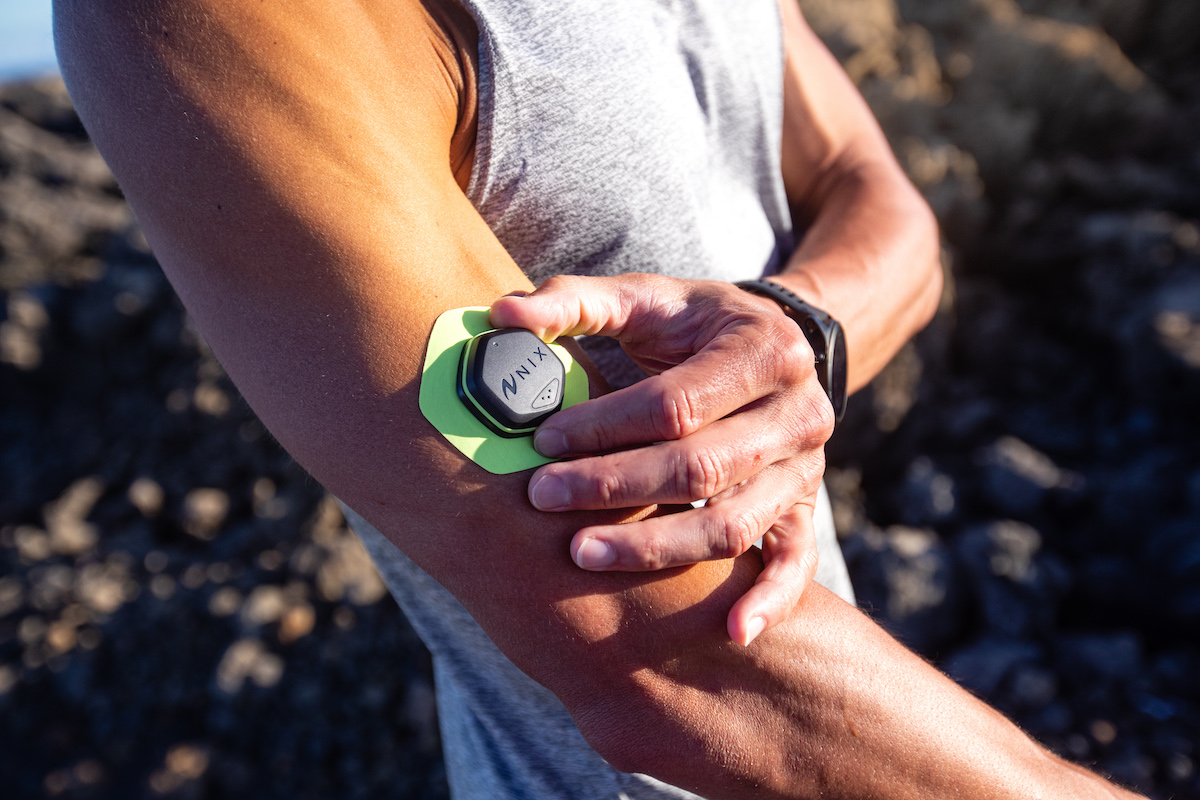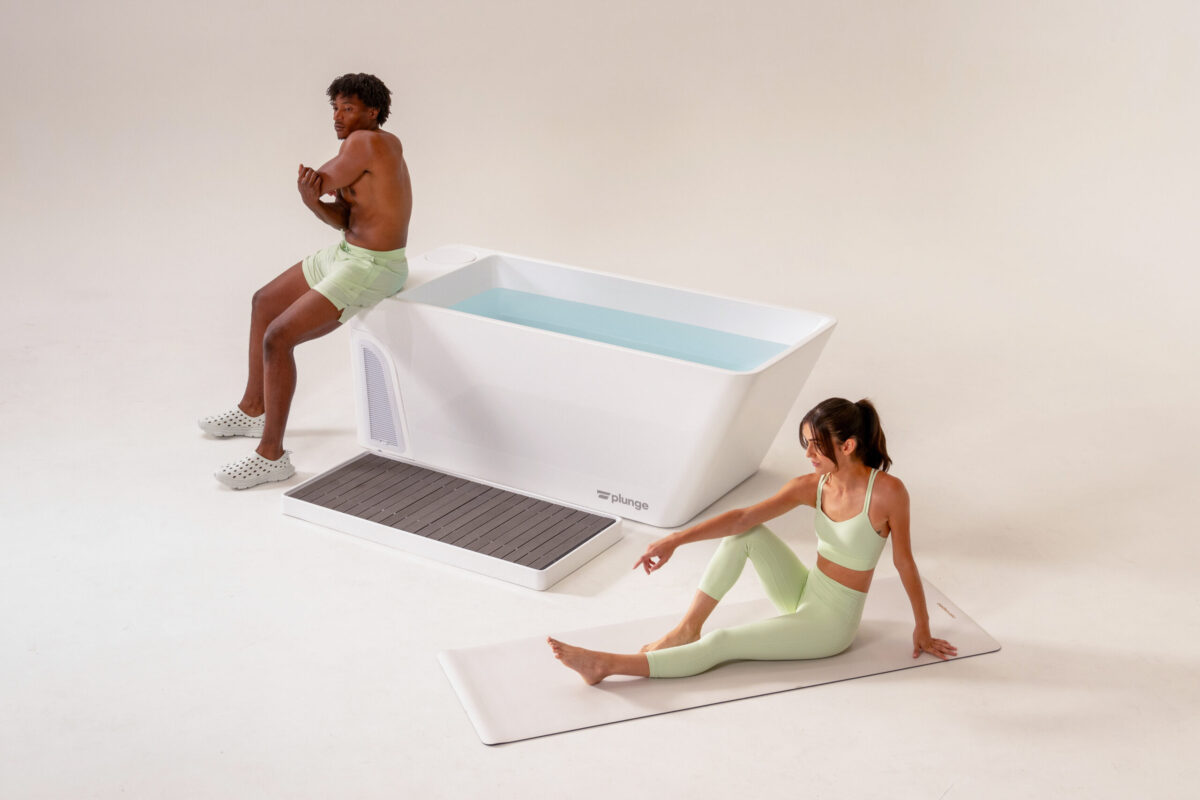In this Q&A, you’ll hear from Meridith Cass, founder and CEO of Nix Biosensors, creators of a biometric patch that extracts real-time hydration data from human sweat. Meridith shares how a unique experience at Harvard created the flexibility to conceptualize an affordable and practical tool for helping endurance athletes perform at their highest levels.
Can you tell us about what you’re working on at Nix Biosensors?
Meridith Cass: Nix Biosensors is changing the way humans practice healthcare by giving them new ways to access, understand, and act on their personal biology in real time.
Our first biosensor is a patch that adheres to your arm and analyzes your sweat, providing personal hydration guidance to athletes, soldiers, and laborers. It’s like a portable sports performance lab — as your sweat passes through a flow channel in the patch, it’s analyzed every second to determine your sweat rate, electrolyte-loss rate, and sweat composition.
The core feature is real-time recommendations for when, what, and how much to drink during a workout. For example, if you’re training for a marathon, you can opt to get a notification each time you need to consume four ounces of your hydration beverage of choice. Then, post-workout, the app reports your overall hydration status and recommends a recovery plan.
Alongside the sweat profile, the app also captures data regarding the environment you operated in — including temperature, humidity, altitude, and more. This workout history is then leveraged to build personal hydration, electrolyte, and beverage recommendations for future workouts based on the upcoming weather forecast.
In other words, Nix takes the guesswork out of hydration. No more trial and error.
Electrochemical and molecular biomarker analysis like this represent a major advancement over traditional wearables. Current sensing methodologies—including GPS, accelerometry, and even optical impedance—are not traditionally regarded as biometric data and are severely limited in accuracy.
Nix’s sensor, on the other hand, is validated using the exact same methodologies used in sports performance labs. It’s also much more competitively priced than traditional wearables — costing just $99 to get started, with no subscription required.
How did you come up with the idea? What key insight led you to pursue this opportunity?
MC: I spent the bulk of my career at the intersection of venture capital and venture creation. Over this time, I’ve helped to launch seven startups while working with four Boston- and New York-area venture funds. This experience gave me a front-row seat to the wealth of innovation coming from the world of healthcare — most of which has been traditionally closed off to the general public.
It seemed absurd to me that you would have to go to the doctor or emergency room to access basic personal health information — which, of course, only happened when you were sick. This model, applied over time, has turned our healthcare system into a sick-care system moderated by clinicians.
Philosophically, I believe that humans—not “patients”—should have access to understandable, actionable means of improving their health. And while wearables have tried to close this gap, they’ve also fallen short. In particular, by not using validated biomarker data and failing to solve true pain points for the user.
In building Nix, analyzing hydration levels rose to the top application, as athletes have previously had to rely on difficult and unreliable methods (like urine color or lab tests), leading to dehydration and electrolyte deficits — two markers that impact physical and cognitive performance.
Most athletes are left to go by thirst alone, which is proven to be unreliable. In fact, studies from the US Army show that only 50% of fluids lost are replenished when relying on thirst. Similarly, outdated methods of assessing hydration lead to inaccurate estimations of hydration need up to 80% of the time.
As a result, athletes are incurring performance impairments of up to 29% during their workouts and competitions. And this is even with just mild, typically asymptomatic levels of dehydration.
But, all of this is preventable with real-time data. So, while there are several other biomarkers in our sights (such as blood, saliva, and even tears), we believe that sweat currently holds the most promise… mainly because the process of capturing it can be done passively. Sweat requires nothing more than a simple patch — wear it and forget it.
How did you turn your idea into a company?
MC: In the early days, I benefited from a few unique privileges which allowed me the opportunity to pour all of my energy into building Nix.
While at Harvard Business School and working in the Harvard Innovation Lab, I was a Blavatnik Fellowship and Entrepreneur-in-Residence designation. This meant a twelve-month salary, health insurance, office space, and funding to identify meaningful opportunities in healthcare. By contrast, many entrepreneurs have no choice but to squeeze the ideation stage into nights and weekends while also holding a full-time job.
I spent the first few months building the business case for Nix’s first application in hydration sensing. This was then followed by several months of testing with experts, athletes, and investors. It was critical for us to understand our future users’ pain points in intimate detail so we could build the best solution.
We started to feel some momentum after winning 11 pitch competitions and awards. These successes made it clear that we were onto something meaningful. From there, the funding started to flow, and we set out to build our team for engineering the perfect solution.
How big can this get? What’s the addressable market and how do you go about capturing it?
MC: A lot of people think that compared to powerful organizations like the NFL or NBA, endurance sports are niche. However, the market is truly massive. For example, there are 60M runners in the US alone, plus another 60M cyclists.
Ultimately, we believe hydration management is a fundamental human need, so in addition to targeting endurance athletes, we also intend to expand our work into team sports, the military, laborers, eldercare, and the general population. Research pilots are already underway with top IndyCar drivers, SEC college football teams, and the Boston Fire Department.
Beyond the specifics of hydration, the greater market for biosensing skin patches is expected to reach $18B by 2027. And with the ever-blurring line between “patient” and “consumer,” we believe that biosensing technology will play a major role in the future of healthcare by bridging the gap between consumer wearables and medical diagnostics.
To reach their true potential, biosensors will need to be engineered to be worn anywhere and anytime, track health data continuously, and be built for integration. Then, data can be used to alert you of oncoming illnesses, help manage chronic conditions, and assist doctors in providing more personalized treatment plans.
Looking at your road map, what are some of the milestones you’re targeting over the next 3-6 months?
MC: In the coming months, we have a few exciting plans in development at Nix.
First, we have our upcoming consumer launch, which includes new product features along with additional partnership kickoffs. In that vein, we’ll also be starting and continuing pilot studies with the aforementioned segments (team sports, military, laborers, etc.) while also working to close a Series A funding round.
Nix will begin shipping later this year. You can preorder today at nixbiosensors.com.
Related reading from Fitt Insider: Issue No. 166: Next-Gen Health Wearables
If you’re interested in having your company featured in our Interview Series, send an email to team@fitt.co.



